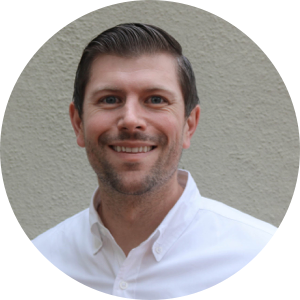In Action: Brand Strategy Framework
Step 1: Brand Strategy
A brand strategy framework relies heavily, of course, on an institution’s brand strategy. We won’t dive deeply into that here, but the most important components found in most brand platform documents: brand essence, brand pillars, brand distincts/reasons to believe. As a brand platform is developed, measures must be put in place to ensure the objectives of the strategy are being met. Many institutions may have ways to measure the effects of brand strategy beyond enrollment data, including NPS scores, brand perception studies, and sentiment analyses. To this end, it is important that we incorporate the components of the brand strategy that align with key objectives and components that should shape marketing and communication activities.
Step 2: Media
Next, we want to ensure that we’ve identified key touchpoints in the prospective student journey. While it would be great to tackle the entire mountain of touchpoints across the average journey, start with a manageable number that you’ve identified through web analytics, CRM data or qualitative and/or informal interviews.
The goal is to understand the context or media environment of the touchpoint, because the login experience of an application portal is markedly different than that of a landing page or a Snapchat ad. We want to move beyond simply describing the relationship between a prospect and a message and think through the entirety of the experience as it relates to other touchpoints.
Thus, a link between a media and message needs to be developed. In this framework, that bridge is what I’ve called ‘moments.’
Step 3: Moments
Now is when we get granular about a prospective student’s journey, moving beyond simple funnel monikers like ‘consideration’ and ‘interest.’
Below are the four steps for creating the appropriate moments.
1. Jobs-To-Be-Done/Need: Jobs-to-be-done (JTBD) identifies the core pursuit of a person as they interact with marketing activities or seeking a solution (a product or service) to a problem. I also used the term need because so many of higher education buying cycles are cyclical. Understanding when needs arise or emerge – and what may drive those needs – may also help inform ways to design experiences that create a stronger imprint of the brand.
2. Rational Thought Process: Once we’ve established the JTBD/Need, what are the rational thoughts prospective students undertake as they navigate their search process? Some common questions you might ask to start are:
- How do prospective students frame or evaluate this experience?
- What may act as an anchor when comparing a previous experience with a competitor?
- What might they miss out on if they don’t act?
- What are key comparisons being made at this point (price, time, effort?)
3. Emotional Thought Process: Next, we want to explore emotional thoughts prospective students may have during this process. Some common questions you might ask to start are:
- What state of mind is a prospective student generally in at this touchpoint?
- What is the primary driver for this current interaction?
- What feelings does a prospective student bring to the interaction and what are they usually left feeling after the interaction?
4. Intended Action: Finally, what is the ultimate action a prospect wants to take at this touchpoint. Is it to explore scholarship opportunities? Find their assigned admissions counselor? Register for an open house? If the goal of experience design is to enhance value creation for both customer and brand, clearly defining the intended action is critical to identifying how you can elevate the desired action.
Step 4: Message
By now we should have a clear view of the mindset of a prospective student at key touchpoints along the customer journey. Now we must create value that aligns with our desired brand outcomes. To do so, we must understand that ‘message’ can be both verbal and visual — or in this case, the totality of the experience. For example, a brand’s take on personalization can be a line of customized copy in an email or the design of a custom web application.
After you’ve decided on what proposition you must deliver, you need to choose an emotional driver that you will use to create your desired brand outcome. The experiences we have with brands hold much more power over how we feel about the brand and how we hold that experience in our memory — both having influence over our perceptions of a brand.
One example of a successful brand experience is Lululemon. In 2019, Lululemon opened community-based experiential stores that featured a fuel bar, sweat studio and meditation room. The goal was to design a brand experience that strengthened the association between usage and daily ritual, anchoring the experience to the brand’s overall message of authenticity and attainability. Each moment in the store was planned around evoking specific emotions that the brand felt would build key associations.











